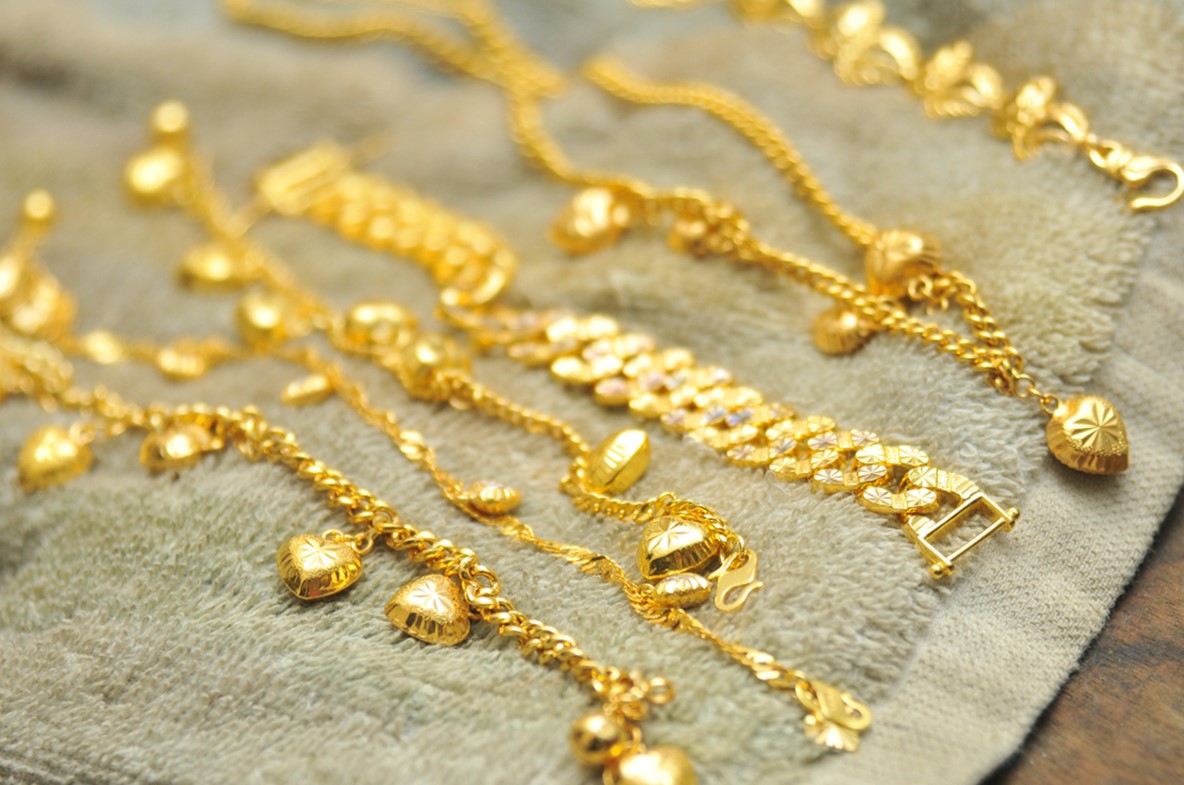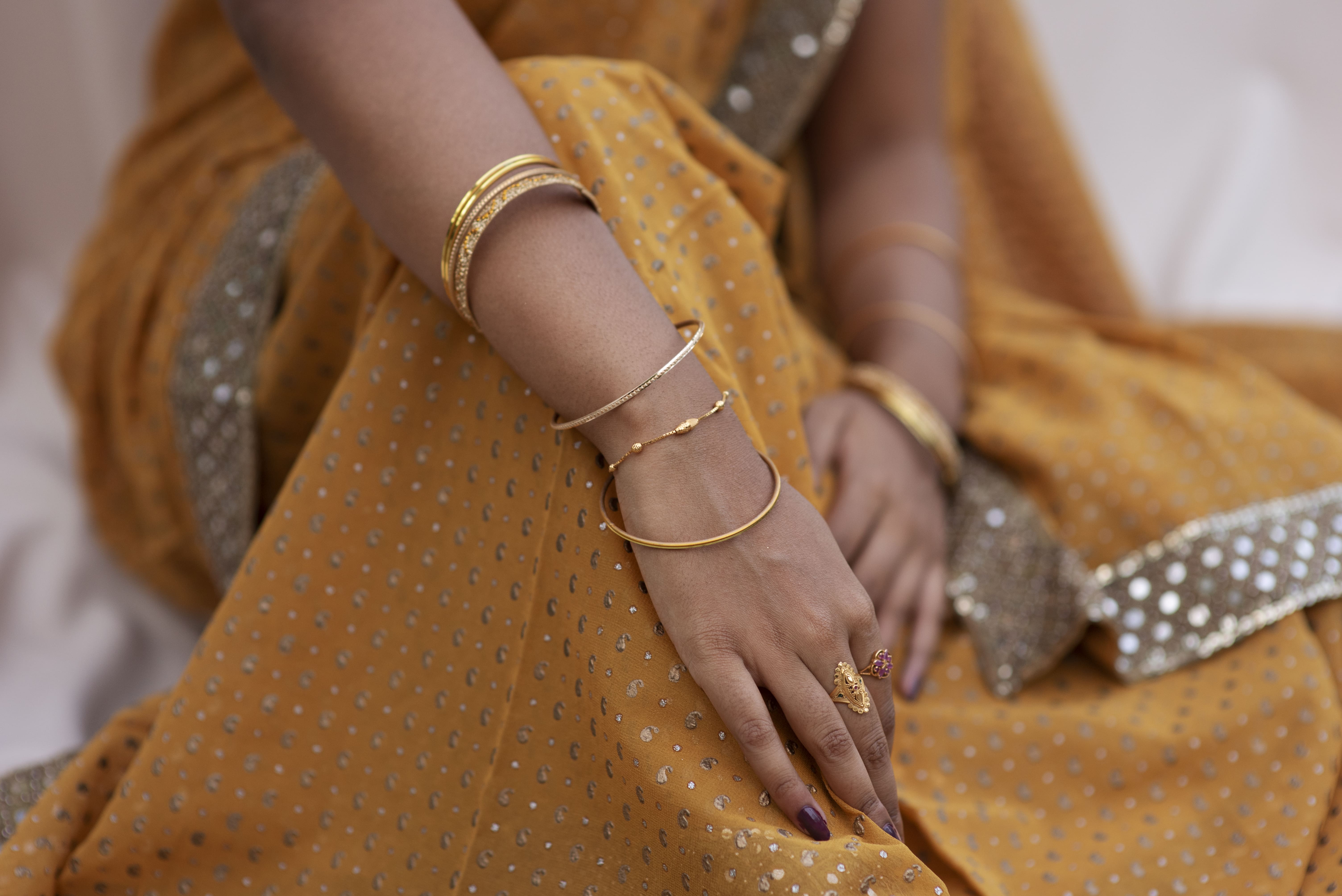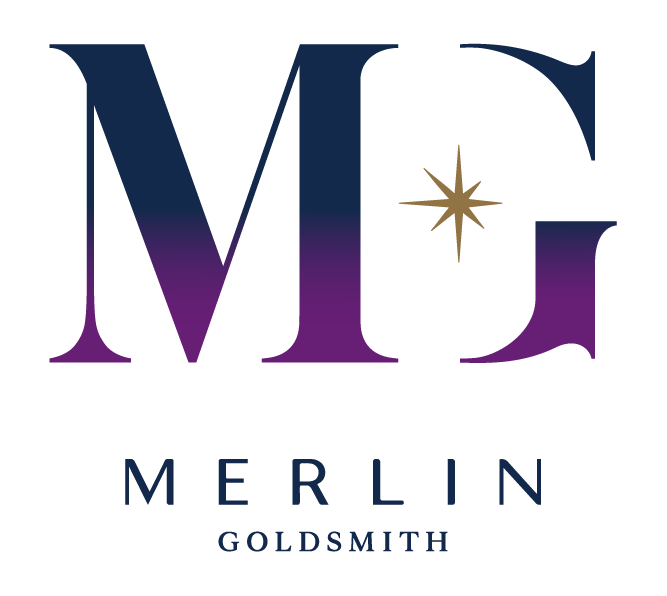
With gold’s unparalleled elegance and ageless allure, it really is no wonder why gold jewellery continues to be a must-have accessory among other types of jewellery for its symbolism of prestige and sophistication. Whether adorning it for classy evening dos, adding some luxurious charm to your everyday ensemble, or as a token of good energy and prosperity, gold jewellery remains at the top of its league as a simple yet captivating sight.
The essential element behind every beautifully crafted piece is gold purity, a characteristic that determines the deep shade of gold, its durability, and the overall value it can fetch. Several levels of gold purity largely influence the piece of jewellery, so familiarising yourself with the differences can allow you to make informed decisions about what kind of gold jewellery you want.
To help you out, this guide will bring to light the nuances surrounding gold jewellery purity, ultimately helping you understand and purchase gold jewellery that fits your preferences.
What is Gold Jewellery Purity?
When it comes to jewellery, you may have encountered the words “carat” and “karat”. Briefly put, the term “carat” is a measurement unit used to determine the weight of a precious gemstone—most commonly a diamond—and, at times, to indicate the purity of gold. On the other hand, “karat” (K) is used exclusively to measure the proportions of gold jewellery purity, labelling the amount of pure gold and alloy (mixture of other metals) present in a piece of accessory.
Why should pure gold be mixed with other metals? Would that not reduce the value and beauty of the jewellery? For one, pure gold is very soft and malleable, making it a bit too delicate for everyday wear. Therefore, it is often mixed with other metals like copper, palladium, silver, and zinc to create stronger and more durable pieces. Mixing gold with alloy does not diminish the elegance of a piece of jewellery, and they may be ideal options for those with active lifestyles or a budget to maintain. Besides, adding more alloy than gold offers charm as it produces softer hues of gold, perfect for those with an eye for subtle luxury.
Understanding Karats (K) and Gold Purity
Each gold jewellery has varying degrees of gold purity defined by the karat (K) measurement system, namely 24-karat gold, 22-karat gold, 18-karat gold, and 14-karat gold. The difference in these gold purities is marked by the amount of pure gold and alloyed metals a piece of jewellery contains, ultimately offering a unique blend of fashion and function according to your needs.
If you are looking for pieces of jewellery suitable to be worn daily, you should opt for those with lower karat gold—such as 18K or 14K—as they are more durable and may withstand deformation and scratches. On the other hand, if you fancy investing in gold pieces to be kept as family heirlooms or donning statement pieces with simple and elegant designs, higher-karat gold is the more desirable option as it holds more worth due to its higher gold content.
24-Karat Gold
24-karat is also known as pure or 999 gold, a nod to its 99.9% gold content. Despite its immense value and opulent shine, 24-karat gold is very soft and susceptible to damage, even from the slightest bump against the wall. Reserving your 24K pieces for special events is an excellent way to accentuate your outfit and refine your look without risking damage from frequently fashioning them. You would not want to risk breaking or losing your expensive 24K gold jewellery while doing house chores or dynamic activities!
22-Karat Gold

Next in line is 22-karat gold, or 916 gold, named for its 91.6% pure gold composition mixed with 8.4% alloys. This subtle combination of pure gold and alloyed metal like copper and silver makes the 22K gold a hint stronger and more durable than 24K gold while retaining its deep golden tinge. This metal is commonly used to create stunning statement pieces for weddings or family inheritance, particularly in cultures where gold holds deep significance—symbolising prosperity, such as in Chinese and Indian cultures. Nevertheless, 22K gold jewellery is still relatively soft and fragile, so flaunting it very often is not recommended.
18-Karat Gold
18-karat is also known as 750 gold, containing 75% pure gold and 25% alloy metals—a holy grail in making sophisticated yet practical gold jewellery. This combination is the secret ingredient in preserving the magnificent appearance of gold while significantly boosting its strength and wearability. Oftentimes, you may find engagement rings, wedding bands, or other pieces suitable for daily wear using 18K gold. Furthermore, 18K gold is more versatile than 24K and 22K gold, making it easier to craft detailed designs and add gemstone settings you see readily made or for bespoke jewellery.
14-Karat Gold
The final gold purity grade popular in jewellery-making is 14-karat gold or 585 gold, which comprises 58.5% pure gold and 41.5% other metals. 14K gold is ideal for making jewellery worn daily—particularly engagement or wedding rings—or in the gym due to its superior strength. Granted, the lesser pure gold content in the mix may cause 14K jewellery to appear in a subtle gold colour instead, yet they still possess a refined, understated beauty. If you have a somewhat tight budget and desire an elegant piece that can stand the test of time, 14K gold jewellery will be the right choice.
How to Test Gold Jewellery Purity at Home
You might think that testing the purity of gold jewellery after purchasing it is unnecessary. However, testing the purity of your gold jewellery is essential to avoid donning counterfeit items on your neck or wrists or investing in fake gold for generations to come!
Below are several DIY methods you can use to test the purity of your gold jewellery.
Visual test
A common visual test would be to identify hallmarks and purity markings. These official stamps indicate a jewellery’s gold and alloy content, which you will typically find engraved in enclosed locations: the ring band or the necklace clasp are just a few examples. These gold purity markings may appear in karat measurements or decimal-based systems, depending on the authority that certified the jewellery.
|
Karat (K) |
24 |
22 |
18 |
14 |
|
Decimal (%) |
99.9 |
91.6 |
75 |
58.5 |
|
Mark |
999 |
916 |
750 |
585 |
Pay close attention to these details, as they can help you distinguish between solid gold and lower-cost alternatives like gold-plated (GP) or gold-filled (GF) items that only use a thin layer of gold over base metals.
Float test
The float test is a simple, DIY method that involves observing if the jewellery piece floats or sinks when placed in water. You only need a bowl or container filled with water to perform this simple assessment. Pure gold is a highly dense metal that will immediately sink to the bottom of the bowl. If the gold jewellery floats instead, it may mean it is not even made of gold or only has trace amounts.
However, this test may not provide an accurate answer, because not all non-gold items will float, and some low-density gold items could also float. It is a good initial check to help you figure out whether your possession is made of genuine or fake gold, but not definitive.
Magnet test
Unlike other metals, pure gold is not magnetic, so it should not stick to magnets unless it is counterfeit. Therefore, you can simply do the magnet test to check the authenticity of your gold jewellery by using a strong magnet—N52 Neodymium magnets—and putting it close to your gold piece and observing whether it is attracted to the magnet. If your gold jewellery does not budge, it means they are made of a combination of pure gold with high-purity alloys.
On the contrary, pieces that stick to the magnet likely contain a high percentage of low-purity alloys or magnetic metals like cobalt and iron, ultimately making the gold fake. Be mindful that this at-home test is not entirely foolproof in determining gold purity, as some gold alloys may contain non-magnetic metals, but it can help you quickly identify fake gold.
How to Choose the Right Gold Purity for Your Jewellery

There really is no wrong answer to the “right” gold jewellery purity; it is a matter of personal preference. Many would prefer 24K gold for its prestigious status, but its softness makes it less than ideal for everyday wear; on the other hand, 22K gold remains popular for its high purity and impressive durability thanks to its minimal but vital alloy composition.
People may think that the smaller amount of pure gold in 18K and 14K gold jewellery means it holds less significance, but these karat values have their advantages. Compared to 24K and 22K gold, 18K and 14K gold are far more durable, making them more suitable for crafting elaborate designs and precious gemstones. While 18-karat gold balances the alluring brilliance of pure gold with the resistance of alloy, 14-karat gold takes it up a notch with its extensive durability at economical prices, making these two karat values suitable for sporty fashionistas or those who simply desire heartfelt pieces that remain evergreen.
999 Gold or 916 Gold Jewellery: Pick Your Favourite at Merlin Goldsmith
Learning about the intricacies and details behind thoughtfully crafted gold jewellery goes beyond necklace chain types and earring styles. Gold jewellery purity is the most fundamental element of any accessory and should be the first thing to be considered before moving on to the embellishments and designs offered, ensuring the pieces are well-suited to individual needs.
At Merlin Goldsmith, we have a stunning collection of high-quality gold jewellery of different purity levels, namely 916 gold and 999 gold, all with unique styles that appeal to you. Whether you wish to purchase a Pixiu bracelet to attract good wealth or own elegant gold necklaces to adorn your everyday fashion, we have just the right pieces to cater to your desires and needs. Keep in touch; we will help you find the best gold jewellery you love!
